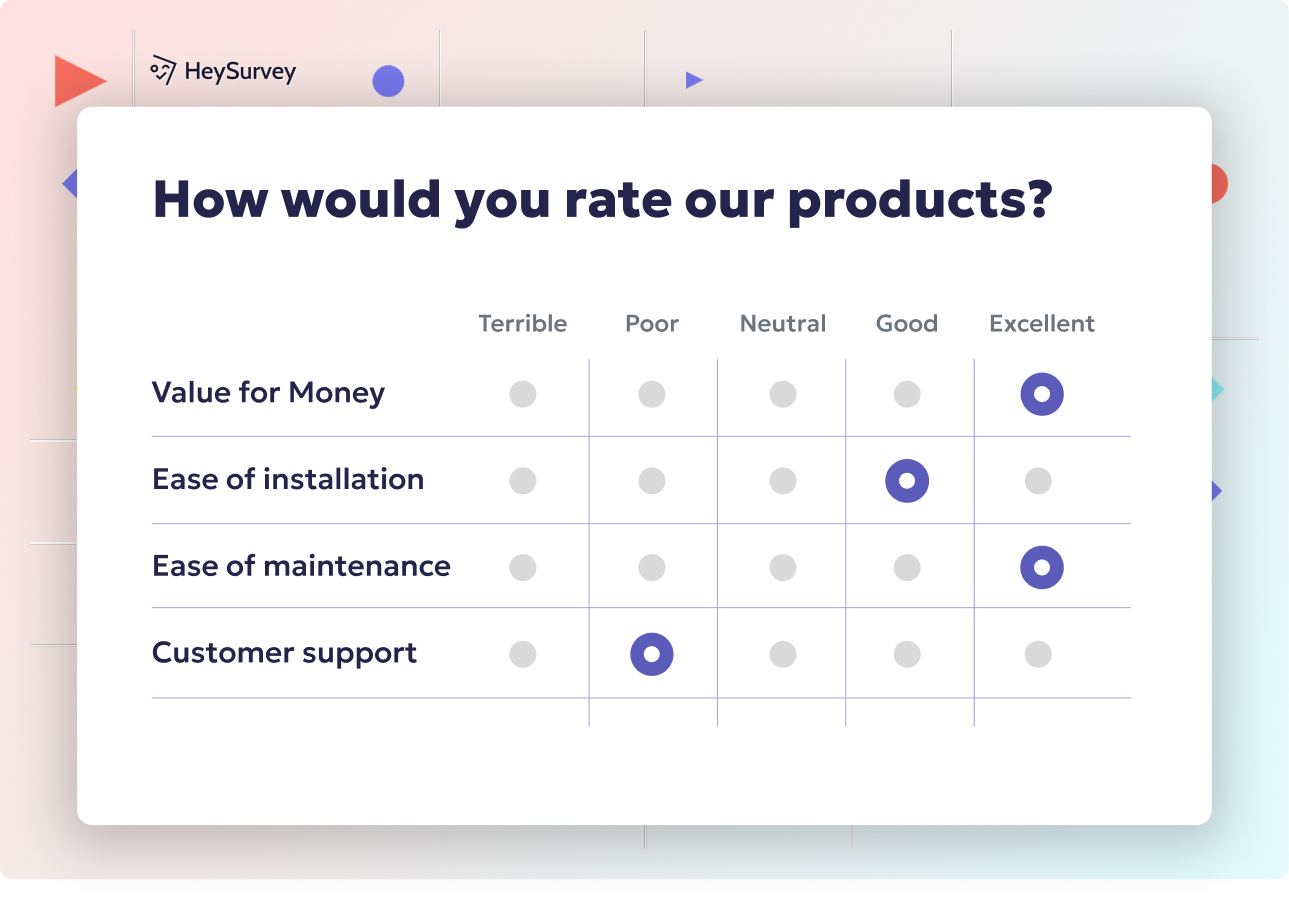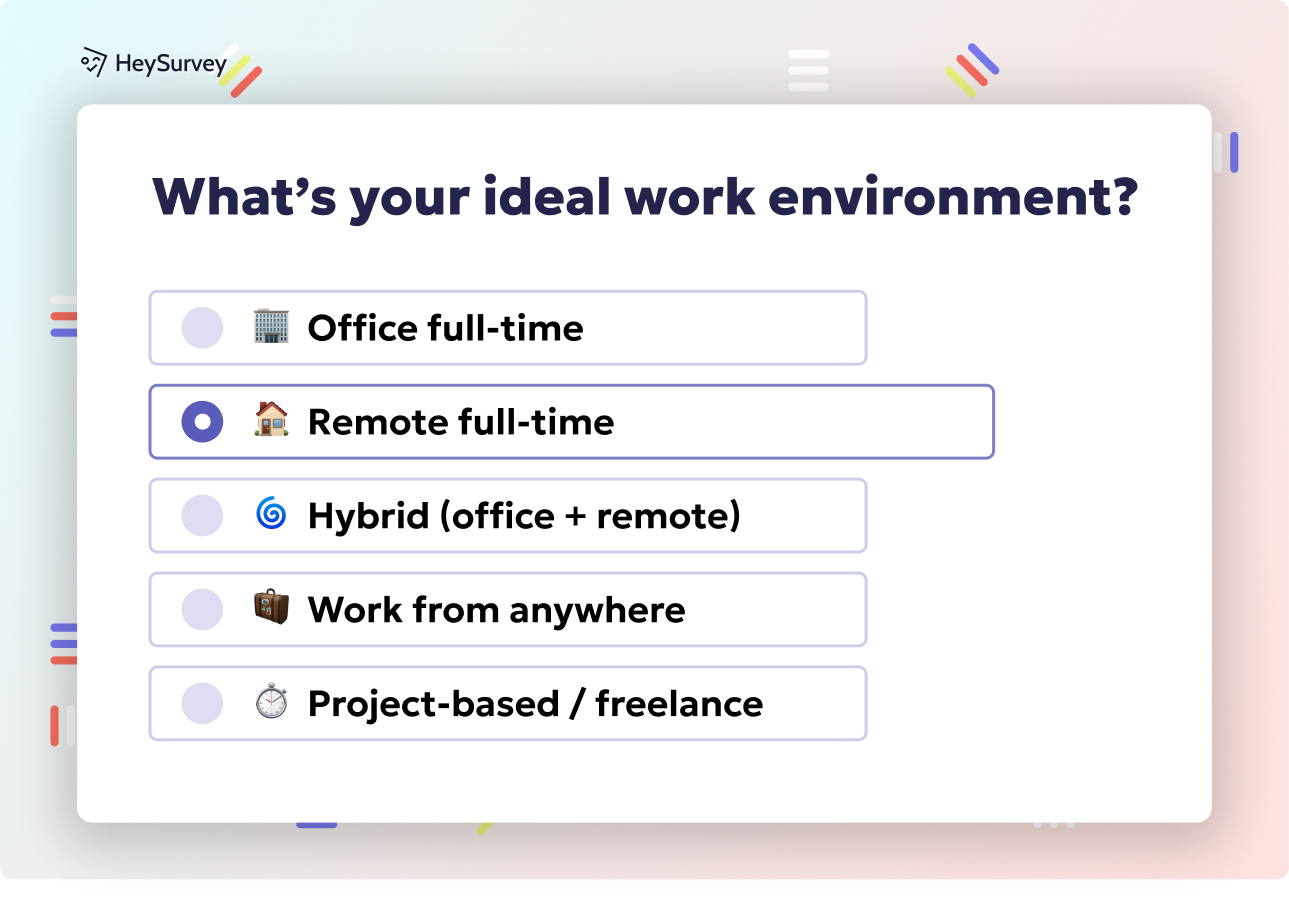32 Attitudinal Survey Questions: Types, Examples & Best Practices
Explore 25 expert attitudinal survey questions with types, examples, and best practices to capture beliefs, feelings, and preferences effectively.
Attitude is a powerful thing, and researchers know it. When you want to understand what people believe, how they feel, or why they make choices, you need more than just “what did you do?” or “where are you from?” Attitudinal survey questions dig deep into perceptions, preferences, and emotions. Unlike behavioral or demographic questions—which focus on actions or background—attitudinal items address the elusive “why.” Whether you’re chasing product-market fit, unraveling brand perception, measuring user experience (UX), or boosting employee engagement, these questions are vital. According to Pew Research, 72% of organizations leverage attitudinal surveys for segmentation and predictive analytics. This guide explores eight essential types of attitudinal questions you can use to level up your next survey.
Likert Scale Attitudinal Questions
The mighty Likert scale is one of the most familiar faces in the world of survey research. It usually gives respondents five, seven, or even nine response points ranging from “Strongly disagree” to “Strongly agree.” These scales capture the full spectrum of agreement, intensity, or frequency regarding a statement, letting people express just how much they love or loathe something.
What makes the Likert scale so powerful is its versatility and data granularity. Whether you’re asking about software usability, gauging employee morale, or tracking satisfaction with your local coffee shop, Likert scales deliver easy-to-analyze, granular data. It's a favorite tool because it can transform fuzzy attitudes into tidy, actionable numbers. The 5-point is a classic, but 7- and 9-point versions shine when you need extreme detail or want to avoid neutral “lazy” responses.
Why & When to Use a Likert Scale
The Likert scale is your best pal when you need to track attitude shifts over time or compare different customer segments. Its numerical spread makes it ideal for measuring subtle changes—say, after a big product launch—so you can understand whether you’re actually moving the needle.
It really comes to life in longitudinal user research and Net Promoter Score (NPS) follow-ups. Measuring the before and after of a new initiative? Need quantifiable insights for a cohort analysis? This format shines in all those cases.
- Nice for monitoring things over weeks, months, or years
- Compares groups and highlights small but meaningful changes
- Turns fuzzy feelings into tangible metrics
- Excellent for internal benchmarking or post-launch feedback
- Great companion for customer journey mapping
5 Sample Likert Questions
I find the new dashboard easy to navigate.
Our company’s mission motivates me daily.
Price represents good value for the quality offered.
I feel confident recommending this brand to friends.
Customer support resolved my issue quickly.
Research indicates that using a 7-point Likert scale enhances data reliability and validity due to the increased spread of options, better capturing respondents' viewpoints. (atl.web.baylor.edu)
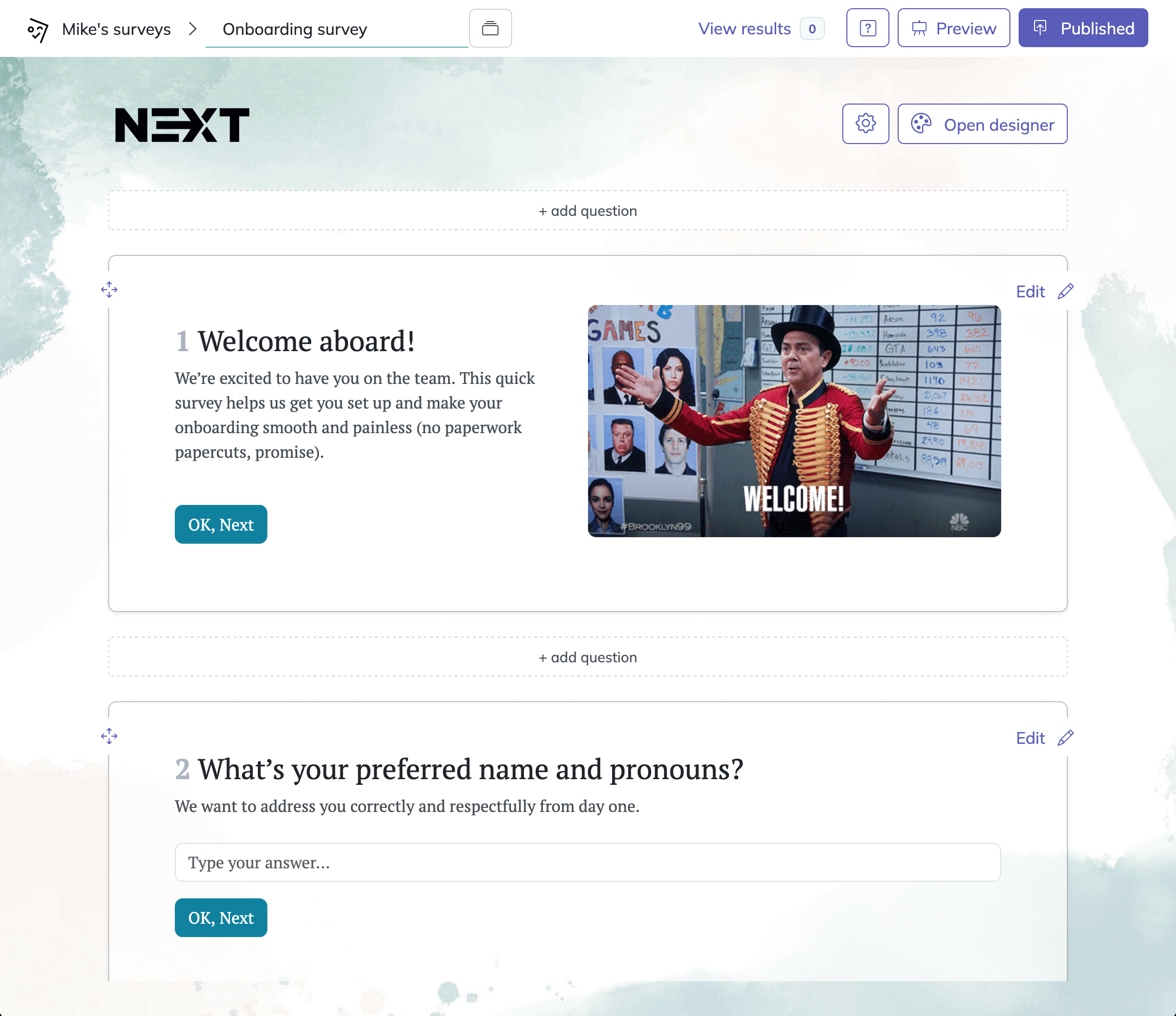
How to Create Your Attitudinal Survey with HeySurvey in 3 Easy Steps
Getting started with HeySurvey is a breeze—even if you've never heard of it before. Here’s how to build your attitudinal survey from scratch or jump in with one of our handy templates. Ready to roll? Let’s break it down.
Step 1. Create a New Survey
First things first: log in to HeySurvey or create a free account if you don’t have one yet. Once you’re in, click the “Create Survey” button on the dashboard. You’ll be offered three choices:
- Start with a blank survey to build everything exactly your way.
- Pick a pre-built template matching your research goal (like customer feedback or brand perception).
- Use the text input option and type or paste your questions to auto-build your survey.
For newcomers, we recommend starting with a relevant template. It saves you time and sets the foundation for adding your attitudinal questions. After selecting your survey method, give your survey a clear internal name—this helps keep everything organized in your dashboard.
Step 2. Add Your Attitudinal Questions
Now let’s build your survey content. Click “Add Question” at the top or between existing questions.
- Choose your question type depending on which attitudinal format you want: Scale (Likert, NPS), Choice, Ranking, Text, or others.
- Type your question text and add any explanations or instructions if needed.
- Customize your options—set the scale to 5, 7, or 9 points for Likert scales, enter adjective pairs for semantic differentials, or prepare your ranking list.
- You can mark questions as required, add images or multimedia, and even use markdown formatting for emphasis.
If you want to get fancy, use branching to direct respondents down different paths based on their answers. It’s perfect for personalizing a survey or skipping irrelevant questions—making the flow smoother and the data cleaner.
Step 3. Preview and Publish Your Survey
Once you’ve added all your questions, hit the Preview button. This opens your survey in a new tab so you can experience it exactly as your respondents will. Double-check the design, flow, and answer options to catch any tweaks before going live.
Happy with what you see? Click Publish to make your survey live. HeySurvey will generate a unique shareable link that you can email, post, or embed on a website. Just remember, publishing requires a registered account so your responses are saved and accessible later.
Bonus Steps to Make Your Survey Shine
- Apply Your Branding: Open the Designer Sidebar to upload your logo, choose color schemes, fonts, and backgrounds. Branded surveys look professional and increase trust among respondents.
- Define Key Settings: Use the Settings Panel to set survey start/end dates, limit the number of responses, or add a redirect URL for after completion. You can even allow respondents to view summarized results if desired.
- Choose Branching Logic: Customize question paths for personalized flows. Branching lets you skip or add questions based on previous answers, keeping things relevant and respondent-friendly.
Want to jump right in? Scroll below and click the button to try a ready-to-use attitudinal survey template!
Semantic Differential Scale Questions
Ready to get a little more poetic? Enter the semantic differential scale, where respondents rate an item between bipolar adjective pairs across a 7-point continuum. Imagine lining up “Modern” and “Outdated,” and responders marking their spot on that spectrum. This method captures the nuanced connotations and emotional tone behind attitudes with remarkable clarity.
The real beauty of the semantic differential is the visually intuitive profile it creates. Stakeholders instantly “see” how a product or brand is perceived. If you want to know if your new logo feels “approachable” instead of “distant,” this is your format.
- It’s a go-to for branding, personality, and design research
- Turns abstract feelings into measurable trends
- Uncovers subtle differences in message or experience perception
- Helps discover emotional drivers of customer choices
- Pairs well with visual report and dashboard presentations
Why & When to Use Semantic Differential
This format slays when your goal is to capture product or brand tone, nuance, or personality. Maybe you’re testing a new campaign or logo and want to know if its “vibe” hits the mark—or flops.
Semantic differential scales also shine in quick competitor comparisons. They let you see if people find your experience “clear” and your rival’s “confusing,” or your service “premium” and another’s “budget.”
- Pinpoints subtle perception shifts after small changes
- Superb for UX design and ad concept research
- Maps attitudes in a way that tells a story visually
- Quick to answer, easy to interpret
- Helps filter out “meh” and “love it” reactions
5 Sample Semantic Differential Items
Reliable 1 2 3 4 5 6 7 Unreliable
Innovative 1 2 3 4 5 6 7 Conventional
Clear 1 2 3 4 5 6 7 Confusing
Approachable 1 2 3 4 5 6 7 Distant
Premium 1 2 3 4 5 6 7 Budget
Semantic differential scales effectively measure attitudes by capturing evaluation, potency, and activity dimensions, providing nuanced insights into respondents' perceptions. (methods.sagepub.com)
Stapel Scale Questions
Feeling stuck because your adjectives aren’t quite opposites? Meet the Stapel scale—a nifty alternative with a twist. Instead of asking people to rate between polarized words, this scale uses a central attribute and has respondents score it from +5 (very positive) to -5 (very negative). There’s usually no neutral midpoint, just good ol’ fashioned opinion.
This approach is fantastic for multilingual or cross-cultural research, as translations for true bipolar pairs can be tricky (or downright impossible). Plus, the format squashes neutral midpoint bias—those folks who always pick “in the middle.”
- Squashes “I don’t really care” answers
- Useful for mobile surveys with slider-style interaction
- Especially good for long-running tracking studies
- Reduces translation headaches in global surveys
- Measures attitudes toward one key attribute at a time
Why & When to Use Stapel Scale
When you hit a wall with awkward adjectives or tricky translations, the Stapel scale comes to the rescue. It’s ace for single-attribute measurement, letting you zero in on, say, “accuracy” or “friendliness” without hammering out a truly paired opposite.
It’s also perfect when you want to minimize midpoint bias, especially for quick mobile surveys. With an odd number of options and no formal “neutral,” responses get forced off the fence.
- Ideal for speedier survey experiences
- Good call for rapid-fire “rate-us” microfeedback
- Well suited to packaging, app, or feature reviews
- Simplifies scoring for advanced analytics
- Avoids the “meh, I’m neutral” middle road
5 Sample Stapel Items
Friendly customer service +5 +4 +3 +2 +1 0 -1 -2 -3 -4 -5
App loading speed
Visual appeal of packaging
Accuracy of order fulfillment
Clarity of onboarding tutorial
Thurstone Scale Questions
If you crave a little more rigor, Thurstone scales might be your jam. This sophisticated technique uses equal-appearing interval statements that are pre-ranked by subject matter experts, so each option has a “weight.” Only the best-balanced statements make it into the survey, and respondents simply pick the ones that reflect their view.
The Thurstone method offers a reliable gauge of attitude intensity. Because the possible responses are meticulously sorted, respondents face less mental load, answering with statements they relate to—rather than wrestling with awkward scales.
- Great for sensitive or complex topics
- Reduces ambiguity and overthinking
- Supplies researchers with weighted, validated statement options
- Excellent fit for academic settings and peer-reviewed research
- Favored by psychologists and social scientists
Why & When to Use Thurstone Scale
The Thurstone style is your ally when you’re exploring attitude strength or dealing with nuanced opinions. By letting experts judge the “weight” of statements ahead of time, you can draw sharp distinctions among respondents—even in controversial or complex areas.
Because choices boil down to select pre-ranked statements, this format often feels less fatiguing than endless questions and scales. It’s perfect when you want solid, valid evidence of true attitude.
- Superb for academic research and attitude validation
- Useful where attitude depth is as vital as direction
- Handles sensitive issues with subtlety
- Minimizes survey length and mental effort
- Delivers reliable rankings without forced “agree/disagree”
5 Sample Thurstone Statements
Remote work should be the default for knowledge jobs.
Data privacy regulations hinder innovation.
Genetically modified foods are safe for consumption.
Performance-based pay improves employee motivation.
Government should subsidize renewable energy.
Thurstone scales, developed by Louis L. Thurstone in 1928, provide a systematic method for measuring attitudes by having experts assign numerical values to statements, allowing for precise quantification of subjective opinions. (en.wikipedia.org)
Guttman (Cumulative) Scale Questions
Let’s get hierarchical! The Guttman scale—also called the cumulative or scalogram—presents a set of “agree/disagree” items that progress from least to most intense or demanding. By checking the highest item a respondent agrees with, you can infer agreement with all the easier items below.
The Guttman format is a champion at measuring thresholds of acceptance or progression. If you want to see how far a person will go on a particular topic, Guttman’s cumulative logic is golden.
- Highlights the “tipping point” for issue support
- Excellent for social policy, change readiness, and mindset studies
- Reveals hidden attitudes about progression
- Streamlines scoring for easy segmentation
- Uniquely suited to single-topic deep dives
Why & When to Use Guttman Scale
Guttman’s approach lights the path when you’re curious about progressive attitudes or behavioral intensity. This makes it ideal for mapping social acceptance or policy support—think climate actions, technology adoption, or health behaviors.
By structuring questions hierarchically, the Guttman scale lets you discover precisely where respondents draw the line. Researchers use this format to segment groups by attitude depth or to spot movement up the ladder over time.
- Easy to score for policy adoption readiness
- Perfect for identifying “threshold” beliefs
- Detects incremental attitude or behavior shifts
- Great for longitudinal social science research
- A favorite for organizations tracking advocacy engagement
5 Sample Guttman Items (Attitude to Sustainability)
I recycle at home.
I purchase eco-friendly products.
I avoid single-use plastics when dining out.
I volunteer for environmental causes.
I lobby local officials for greener policies.
Ranking Order Attitudinal Questions
Sometimes, you don’t want another scale—you want people to choose favorites. Ranking order questions ask participants to line up a list of items by preference or importance, giving you a direct peek into their mindset.
This format is brilliant for capturing relative priorities. When you need to know if price trumps performance or if remote work is more coveted than bonuses, ranking makes people choose—not just rate everything “important.”
- Highlights tough decisions and real-world preferences
- Avoids everyone picking “very important” (scale inflation)
- Adds color to feature prioritization and messaging
- Great for product management, HR, and marketing teams
- Useful for value proposition discovery
Why & When to Use Ranking Questions
Reach for rank order questions when you must spotlight what matters most and what can wait. Researchers love these for feature road-mapping, message testing, and making sure precious time or budget goes where it counts.
The method gently nudges respondents to make trade-offs, surfacing hard truths that simple scales can overlook. Say goodbye to straight-lining—nobody can just check “high” for everything.
- Ideal for comparing five to ten items
- Excellent for clarifying customer priorities
- Helps avoid ambiguous or uniform responses
- Easy to visualize differences in preferences
- Works wonders for internal and external surveys
5 Sample Ranking Prompts
Rank the following laptop attributes from most to least important: Battery life, Weight, Price, Processor speed, Brand reputation.
Prioritize employee perks: Flexible hours, Healthcare, Professional development, Bonuses, Remote work.
Order these ad slogans by how compelling they feel to you.
Rank the mobile app features you’d pay extra for.
Place these sustainability initiatives in order of perceived impact.
Constant Sum (Point Allocation) Attitudinal Questions
For a more dynamic spin, try constant sum questions. Here, respondents get a fixed number of points to allocate among attributes, features, or choices, directly showing perceived value, trade-offs, or willingness to pay.
This style stands out by delivering ratio-level data—the holy grail for advanced analytics. Unlike simple scales, it reveals not just what people value, but how much more they value one thing over another.
- Encourages real-world decision-making
- Quantifies trade-offs and budget allocation
- Illuminates willingness to pay or invest
- Excels in conjoint and share-of-wallet studies
- Provides more actionable results than scales alone
Why & When to Use Constant Sum
Whenever you want granular insights into relative importance, allocation, or value perceptions, the constant sum format is clutch. By making people “spend” points or dollars, you uncover not just preferences, but priorities and intensity too.
It pairs beautifully with product and pricing research, budget allocation exercises, or whenever respondents must decide how to divide a limited resource.
- Perfect for market sizing and pricing sensitivity
- Useful in skill development and resource allocation studies
- Brings color to branding and satisfaction research
- Unmasks which features are truly essential
- Enables ratio-level analysis for advanced modeling
5 Sample Constant Sum Tasks
Allocate 100 points across smartphone attributes based on their influence on your purchase decision.
Distribute 10 hours of weekly training time among skills you wish to develop.
Assign 100 budget dollars to marketing channels by perceived ROI.
Split 100 importance points among brand values: Innovation, Trust, Sustainability, Affordability.
Divide 100 satisfaction points among recent customer support interactions.
MaxDiff (Best–Worst Scaling) Attitudinal Questions
Sometimes, “rate everything” isn’t sharp enough. MaxDiff questions use a forced-choice approach: people select the most and least appealing option from a set. It’s brutally efficient at revealing which attributes, messages, or features genuinely matter.
MaxDiff delivers high-resolution preference scores, even across long lists that would have collapsed scales. No more wishy-washy responses—respondents must take sides, and that means more authentic data for you.
- Maximizes differentiation, even among similar items
- Sidesteps scale bias and cultural response patterns
- Works on short or long item sets
- Fast, visual, mobile–friendly experience
- Powers choice modeling and segmentation
Why & When to Use MaxDiff
Turn to MaxDiff when you need to separate the true winners from the also-rans. It’s a lifesaver for concept, message, or feature prioritization—especially when standard scales just blend differences into mush.
It also performs brilliantly in mobile or cross-cultural research. By forcing respondents to make a tough call—best and worst in each mini-set—you guarantee high quality, actionable rankings.
- Reliable for testing benefits, slogans, or service features
- Reduces straight-lining and “everything’s important”
- Ideal for crowded markets and feature-rich products
- Supports detailed persona segmentation
- Easy to analyze, even with many attributes
5 Sample MaxDiff Sets
Which factor most/least motivates you to stay at your job? (Career growth, Pay, Culture, Work-life balance)
Select the most/least persuasive eco-label statement.
Pick the most/least important benefit in a premium credit card.
Choose the most/least appealing design element for a new logo.
Identify the most/least trustworthy information source about health.
Best Practices, Dos & Don’ts for Crafting Attitudinal Survey Questions
Even the best format can flop if the questions themselves are a mess. Crafting effective attitudinal survey questions takes equal parts science and common sense. Neutrality is your friend—never lead respondents by sneaking in your opinion. Always avoid double-barreled items (“Did you find the website fast and easy?”—pick one, please!).
Keep scale length appropriate. Five to seven points work for most, but don’t go overboard unless your data needs demand it. Embrace mobile-first design and clean visual layout, since more people answer surveys on their phones these days. Randomize answer orders to banish order bias and straight-lining.
- Keep question wording clear, simple, and jargon-free
- Use balanced response options (not all positive or negative)
- Write with inclusive language; avoid stereotypes
- Pilot test your survey for reliability (think: Cronbach’s alpha) and clarity
- Consider sample size for valid analysis—bigger is often better
Don’t:
- Use leading or biased phrases (“Don’t you agree…?” spells trouble)
- Crowd your survey with too many open-ends (write-ins are tiring)
- Get carried away with complicated, academic words
- Forget to check for cultural fit—what’s polite in one language may be rude in another
- Let a single response scale dominate (variety reduces fatigue)
For data analysis, think before you leap: means work for interval scales; medians shine with skewed data; top-box scoring uncovers true raves. Always check your coding—garbage in, garbage out!
Conclusion
Attitudinal survey questions are the secret weapon behind powerful insights into beliefs, preferences, and drives. Mastering their variety lets you pinpoint what makes people tick, whether they’re buying, voting, or joining. The right format makes your data clearer, your research sharper, and your decisions smarter. So mix, match, and experiment—your next survey’s “aha!” moment is just a question away.
Related Question Design Surveys

29 Quantitative Survey Research Questions Example for Success
Explore 25+ quantitative survey research questions example with clear explanations and tips for c...
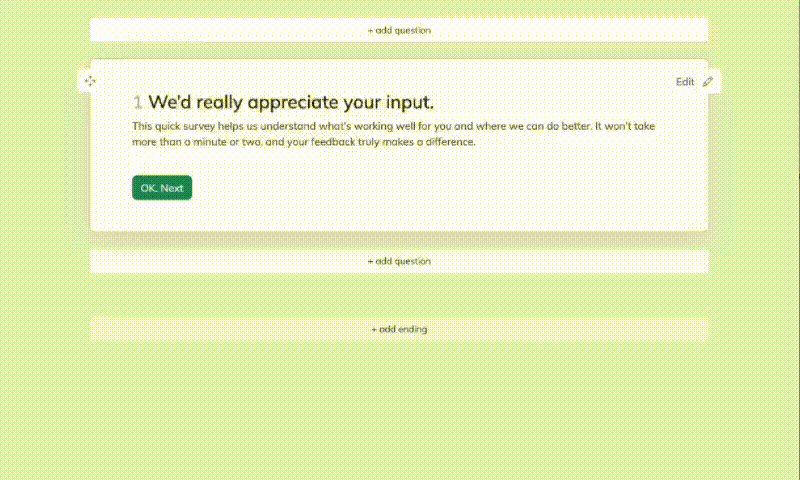
32 Good Survey Question to Boost Your Data Quality
Discover how to craft good survey questions with 30 sample questions across 8 types for better da...
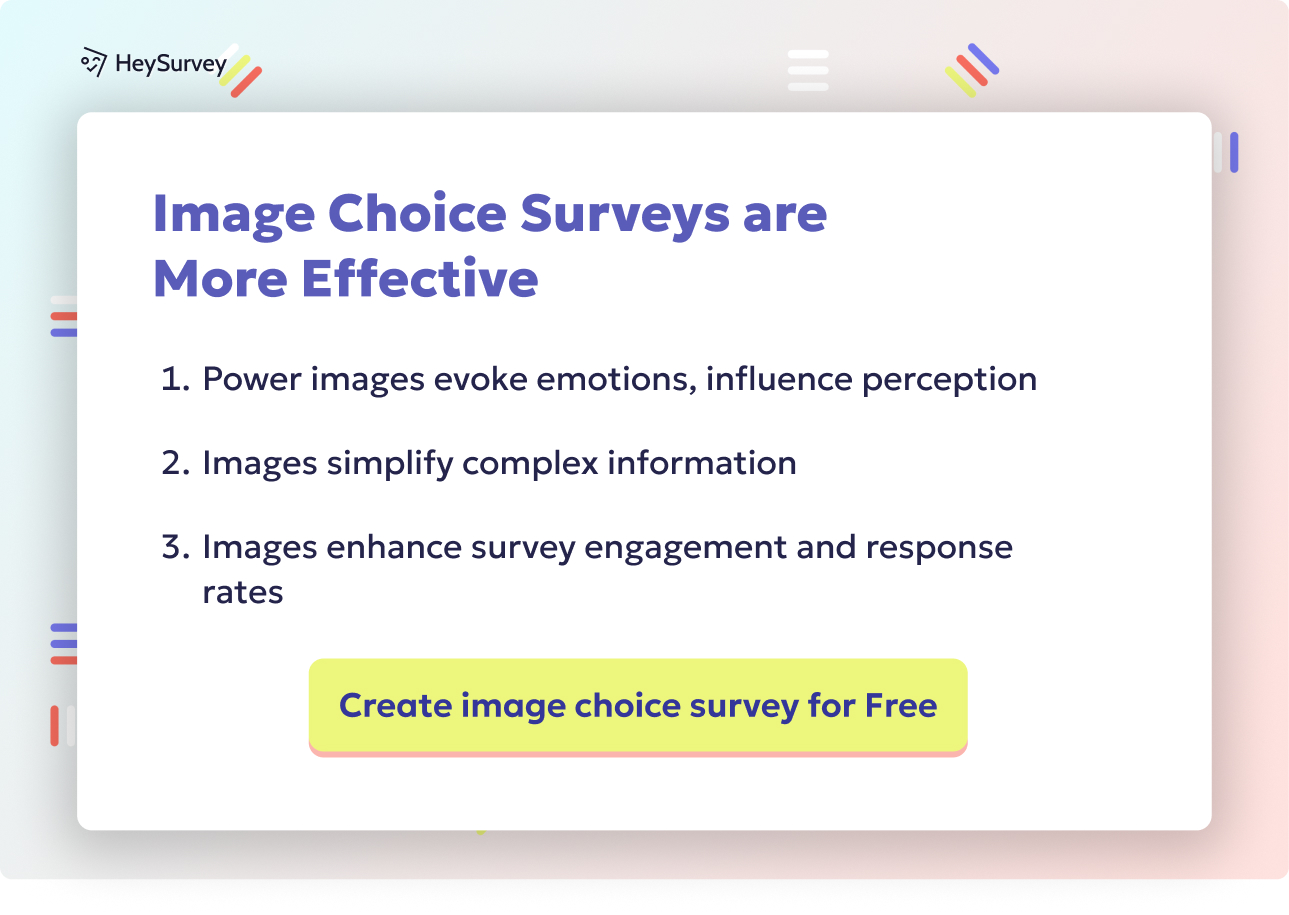
31 Survey Question Mistakes You Need to Avoid Today
Discover 25 common survey questions mistakes with real examples and expert tips to craft clear, u...
